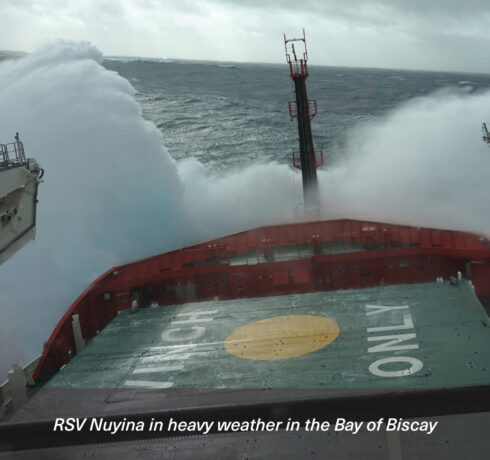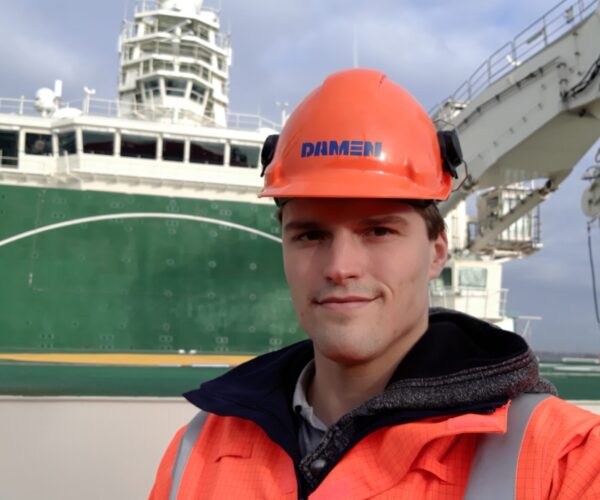 Andreas Pieters, QC - ASRV, Damen Naval
Andreas Pieters, QC - ASRV, Damen Naval
January & February 2021, the Bay of Biscay: Equipment on board the RSV Nuyina – the advanced research vessel built to conduct scientific research in the Southern Ocean and Antarctic waters – was tested at great depths. The tests went well, says Andreas Pieters from Damen Naval.
“We were able to complete everything we had to during these so-called ‘deep-water trials’. Things went smoothly, partly thanks to the excellent communication and joint efforts of all those involved.”
The previous sea acceptance tests (SAT) of Nuyina, whick took place last December, also went well.
The Antarctic Supply Research Vessel (ASRV) that Damen Naval has built for the Australian government is brimming with high-quality equipment and systems to enable scientists to conduct all kinds of research at sea.
Nuyina sailed from Vlissingen-East in the Netherlands to the Bay of Biscay at the beginning of this year to test these instruments. There, in waters up to three kilometres deep, the vessel’s deep-water trials were carried out. This included testing the equipment that could be used to tow research sensors deep under the sea.
There were tests of underwater noise measurement systems, as well as seabed sampling systems that can scientifically determine the state of health of underwater life.
These are just a few of the countless trials that were conducted. They were not only useful, but also incredibly fascinating, says Andreas, who was involved as Quality Controller. “Mankind actually knows more about the universe than about our own seabed.”
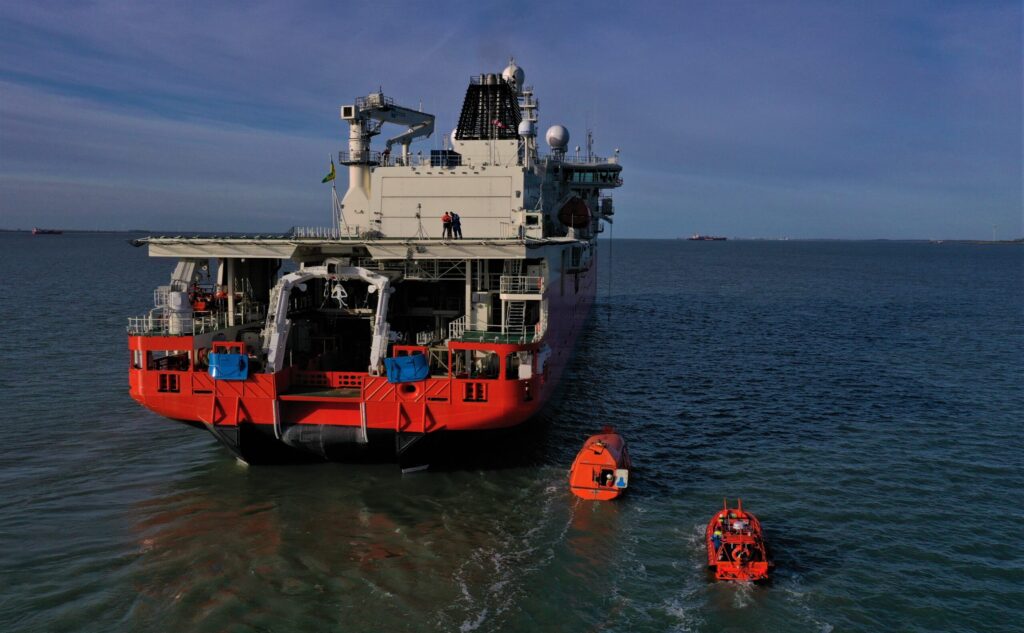 Lifeboat testing on the Western Scheldt estuary in the Netherlands
Lifeboat testing on the Western Scheldt estuary in the Netherlands
There were about 60 people on board during the tests. This included the crew, of course, in addition to the Damen Naval Site Team, a representative of the Client – the Serco consortium – and a delegation from the Australian Antarctic Division (AAD). The AAD will be the 160-metre long vessel’s ‘end-user’, sailing out of its homeport Hobart, Tasmania. Because of the weather, performing the trials was not always straightforward. “We experienced severe weather with ten-metre waves. But, even sailing under those conditions, RSV Nuyina showed that it is not only an advanced, but also a strong and robust ship that can easily withstand the high seas.”
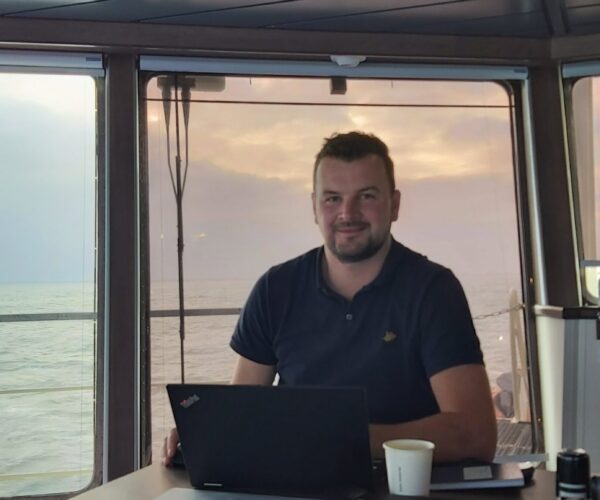 Mark de Wolf, SAT-Coordinator, Damen Naval
Mark de Wolf, SAT-Coordinator, Damen Naval
After its docking in Rotterdam, the ASRV returned to Vlissingen on 8 March. Before the summer, the ice trials have to be completed in Arctic waters. Before the deep-water trials, Nuyina conducted sea acceptance tests (SAT) in the North Sea last December, says SAT Coordinator Mark de Wolf: “While the deep-water trials focused on the scientific research systems, the SAT mainly tested the ship systems. This included propulsion (main engines, propulsion control systems, electric motors), electrical and automation (bridge, radars, communication equipment) and platform systems (drinking water, waste water, tenders and cranes).”
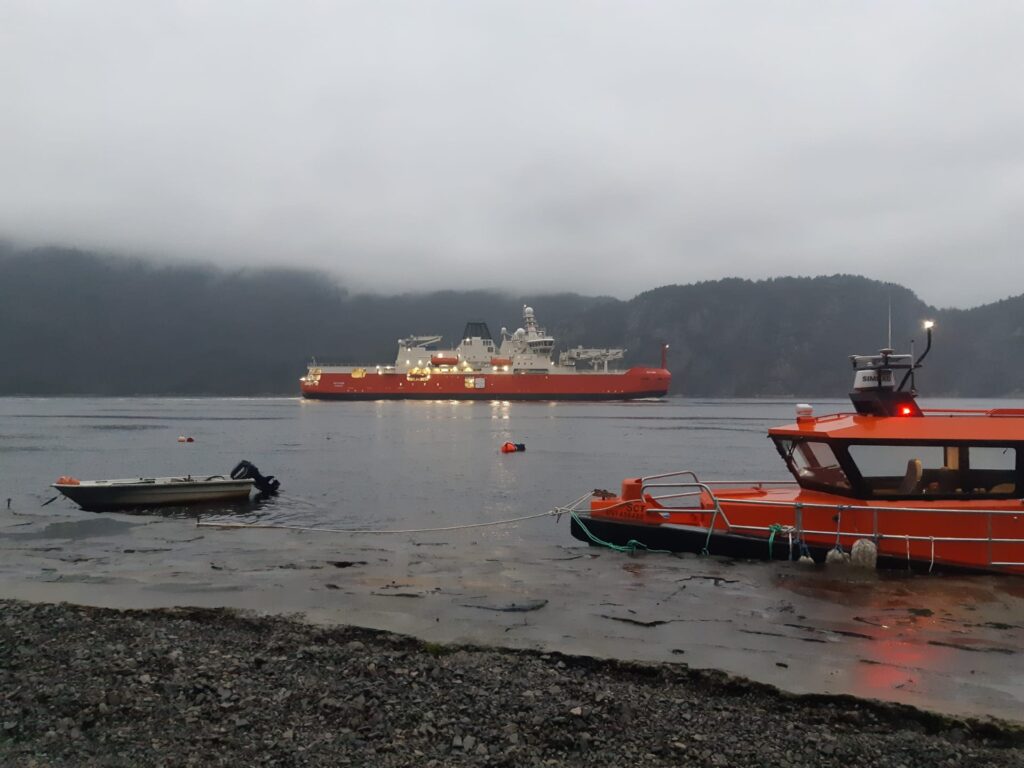 Underwater noise measurements on the Fedafjorden in Norway
Underwater noise measurements on the Fedafjorden in Norway
“In addition, various performance tests were performed, such as speed, manoeuvring and dynamic positioning failure mode tests. These demonstrated that the ship met all the guidelines for Lloyd’s classification.” During the SAT, which took place over four weeks, there were about 100 people on board, including numerous sub-suppliers. Mark: “As a conclusion to those sea trials, just before Christmas we spent a week carrying out underwater noise measurements in Fedafjorden, a fjord on Norway’s southern coast. Thanks to the efforts of all those involved, these tests were also very successful.”
The upcoming ice trials will test how the ship behaves when it is tasked with breaking polar ice; because in addition to being one of the most advanced research vessels in the world, Nuyina is also a genuine icebreaker. As well as being a cargo ship and hotel. Nuyina – the Aboriginal name for the Southern Lights – will soon be supplying permanent research stations on Antarctica and Macquarie Island from Hobart, also transporting scientists to and from these research posts. The ship carries supplies for its on-board personnel for six months.
“It’s like a small sailing village,” says Andreas. “Building such a complex ship was almost a ‘once in a lifetime experience’. Damen Naval has never built a ship like this before and – looking at the prospects for the near future – this will not be repeated anytime soon.” Mark adds: “As a Design & Proposal Engineer, it was very special to see the ship develop from the first steps during the design and contract negotiations in September 2014 into the engineering phase. Then to see it come to life during construction. And now, more than six years later, it is nice to witness the ship taking to the open sea for the first time on its own.”

